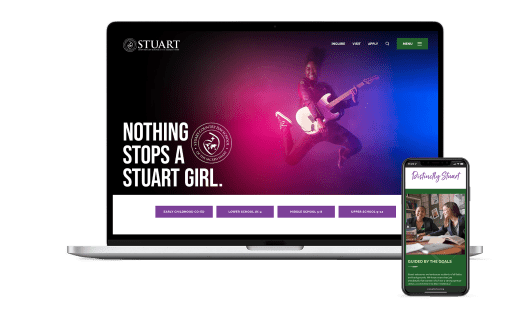Website Design for E-commerce: Best Practices for a Seamless Shopping Experience
Website Design for E-commerce: Best Practices for a Seamless Shopping Experience
Blog Article
Modern Internet Site Style That Catches Focus and Converts
In an increasingly electronic landscape, modern web site layout has arised as a pivotal element in catching customer focus and driving conversions. As we explore these necessary components, it becomes clear that understanding their interaction can dramatically influence a site's efficiency and customer complete satisfaction.
Value of Visual Pecking Order
Aesthetic hierarchy is an essential element in internet site style, as it overviews individuals' attention and boosts their general experience. By purposefully organizing material, designers can route individuals to the most vital info first, therefore enhancing involvement and improving usability.
Integrating a logical circulation in web content arrangement is important; for circumstances, placing one of the most critical details on top of a web page fosters instant recognition. Furthermore, regular use typography, such as varying font sizes and designs, helps establish a clear material framework. This organization not just help in navigation but likewise constructs trust, as individuals really feel extra comfy when they can easily discover what they are seeking.
Ultimately, a well-executed visual pecking order not only improves aesthetic charm but likewise dramatically influences user behavior. By prioritizing important elements and making sure a seamless experience, designers can efficiently convert visitors into consumers, strengthening the value of this fundamental style principle in modern-day site growth.
Responsive Design for All Tools
Producing a seamless experience throughout various devices is important in today's electronic landscape, where individuals gain access to sites from desktop computers, mobile phones, and tablet computers alike. Responsive style is an essential technique that ensures internet sites adjust fluidly to various screen dimensions, resolutions, and alignments. By using flexible grids, images, and CSS media questions, designers can develop formats that keep visual honesty and performance, no matter the device being utilized.
The significance of receptive design prolongs beyond looks; it directly influences user interaction and conversion rates. A website that works well on all devices urges longer brows through and decreases bounce prices, as users are a lot more likely to interact with material that is very easy to navigate. Furthermore, online search engine, specifically Google, focus on mobile-friendly sites in their positions, making receptive layout a crucial part of search engine optimization (SEO)
Including responsive style not just boosts customer experience however additionally enhances the advancement procedure. By creating a solitary website that works across devices, companies can conserve time and sources contrasted to establishing different mobile and desktop computer variations. Ultimately, responsive design is a fundamental technique for contemporary web site layout, ensuring availability and complete satisfaction for all individuals, despite their gadget.
Involving Interactive Components
While a receptive style prepares for a practical internet site, including interesting interactive components is essential for catching individual attention and fostering deeper connections. Website Design. Interactive elements, such as animations, tests, and clickable infographics, develop an extra vibrant customer experience, motivating visitors to invest more time on the site
Including interactive attributes can likewise lead users with complex our website details, making it easier to digest content. Interactive sliders can show product variants, while ingrained videos can offer demos or testimonies that resonate even more than static images or message. Gamification techniques, like rewards for completing tasks or involving with web content, can improve user inspiration and retention.
Effective use of interactive aspects not only improves the user experience but can also lead to higher conversion rates. It is vital to balance interactivity with performance; excessively complicated attributes may hinder website rate, adversely affecting user fulfillment.
Structured Navigation Practices
Effective navigation is a foundation of any type of successful web site, as it directly affects customer experience and web content accessibility. Structured navigation practices ensure that users can conveniently situate details, boosting their communication with the site. A well-structured navigation food selection need to be simple and instinctive, generally featuring a limited variety of main classifications to prevent overwhelming site visitors.
To attain streamlined navigation, designers need to focus on an ordered structure that logically organizes web content. Applying breadcrumb tracks can supply customers with context concerning their present location within the website, permitting for smooth backtracking. In addition, using drop-down food selections can properly save area while still providing accessibility to subcategories.
Responsive layout is crucial, as navigation must be practical throughout all gadgets (Website Design). Mobile users, in certain, benefit from touch-friendly food selections and collapsible areas that preserve use without jeopardizing appearances

Reliable Call-to-Action Methods
A well-crafted call-to-action (CTA) is necessary for directing customers toward desired results on a website, as it urges them to involve with content or purchase. To maximize their performance, CTAs ought to be clear, engaging, and purposefully placed throughout the website.
First, use action-oriented language that interacts seriousness or worth, such as "Begin," "Sign up with Currently," or "Claim Your Discount rate." This language not just inspires customers but also sets clear assumptions about the next actions.
2nd, think about layout elements; CTAs should stand out aesthetically via contrasting find shades, sufficient whitespace, and famous positioning. A button that is easy to see and click boosts the likelihood of user interaction.
Additionally, customizing CTAs based on individual actions or demographics can significantly improve involvement. Customized messages reverberate much more with individuals, driving greater conversion rates.

Verdict
In conclusion, modern-day website design stresses the combination of aesthetic pecking order, receptive formats, involving interactive aspects, structured navigating, and effective call-to-action methods. These parts jointly enhance individual experience, making sure that site visitors continue to be engaged and motivated to discover web content further. By prioritizing these design principles, organizations can substantially enhance customer retention and conversion prices, inevitably bring about greater success in the digital landscape. The continuous evolution of web style highlights its critical role in effective online communication and marketing.
In an increasingly electronic landscape, modern site layout has emerged as a pivotal variable in capturing user attention and driving conversions.Aesthetic power structure is a crucial aspect in internet site More about the author layout, as it guides users' focus and improves their general experience.The significance of responsive layout prolongs past appearances; it straight impacts customer interaction and conversion rates.Integrating receptive design not just enhances user experience yet likewise streamlines the growth process. Inevitably, responsive design is an essential strategy for modern-day site design, making certain accessibility and fulfillment for all users, regardless of their tool.
Report this page